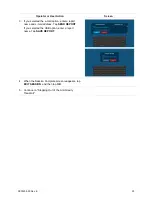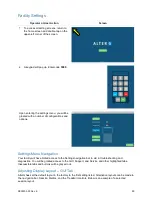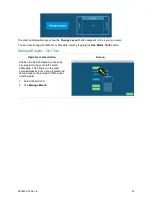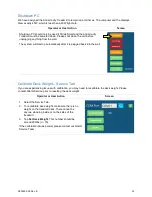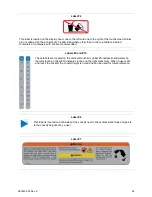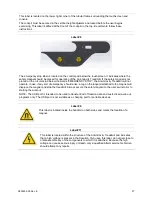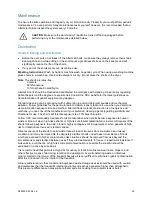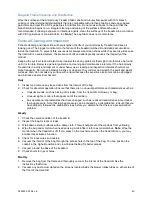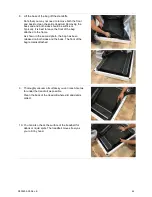
D000505-00 Rev. E
39
Maintenance
To ensure the safe operation and longevity of your Fit Anti-Gravity Treadmill, you must perform periodic
maintenance. You can perform many maintenance tasks yourself; however, it is recommended that an
AlterG technician inspect the system every 12 months.
CAUTION
: Make sure the Anti-Gravity Treadmill is turned off and unplugged before
performing any of the maintenance detailed below.
Disinfection
Shorts Cleaning and Disinfection
•
Before the user puts on or takes off the AlterG’s Shorts, make sure they always remove their shoes.
Keeping shoes on while putting on the shorts puts a great deal of stress on their seams and will
significantly reduce the life of the shorts.
•
If any part of the shorts wears out, discontinue use.
Washing Instructions
: Wash by hand or machine wash on gentle cycle. When using a washing machine
place shorts in a mesh bag. Use a mild detergent. Air dry. Do not place the shorts in the dryer.
Note
: The shorts are latex-free.
Contents:
90% Neoprene
10% Urethane Coated Nylon
AlterG’s Shorts should be cleaned and disinfected in accordance with standing clinical policy regarding
patient apparel and the degree of exposure risk. Consult the CDC website for the latest guidelines on
decontamination of patient equipment and apparel.
Standard cleaning can be carried out with submersion in anti-microbial compounds and mechanical
agitation. Follow guidelines for the particular anti-microbial cleaners that are in use when you determine
decontamination exposure time and method. AlterG Shorts material construction is of neoprene and
urethane; you can consult the manufacturer of your preferred cleaning agents regarding suitability and
directions for use. The shorts will tolerate exposure to a 10% bleach solution.
Follow CDC recommended procedures for decontamination when shorts become exposed to human
waste or blood or when high-risk patients or high-risk microbial contamination is involved. Disposal of the
shorts following exposure to waste, blood or highly contagious microorganisms or when patients at high
risk for infection are involved is recommended.
Direct exposure of the shorts to solid waste (feces) blood or broken skin is considered an unusual
condition and it may be impossible to adequately disinfect shorts under these circumstances. Shorts
which are exposed to higher contamination risk situations should be removed from use beyond the
immediate user and sterilized between uses if they are deemed safe for reuse in a particular individual. If
broken skin, incontinence or high-risk microbial contamination is possible the situation should be
evaluated on a case by case basis.
It is recommended that patients at high risk for urinary or fecal incontinence wear liners, diapers, and
other effective means of damming, retention and absorption. Avoid transferring waste or infectious
organic matter to the interior of the treadmill because it is very difficult to eliminate organic contamination
after it is introduced into the interior of the treadmill.
Urinary catheters and other conduit and bag-based waste storage devices should be used with caution
and awareness that the treadmill’s internal environment reaches a pressure higher than atmospheric.
This pressure difference can pressurize catheter systems, causing then to swell, leak or burst.

